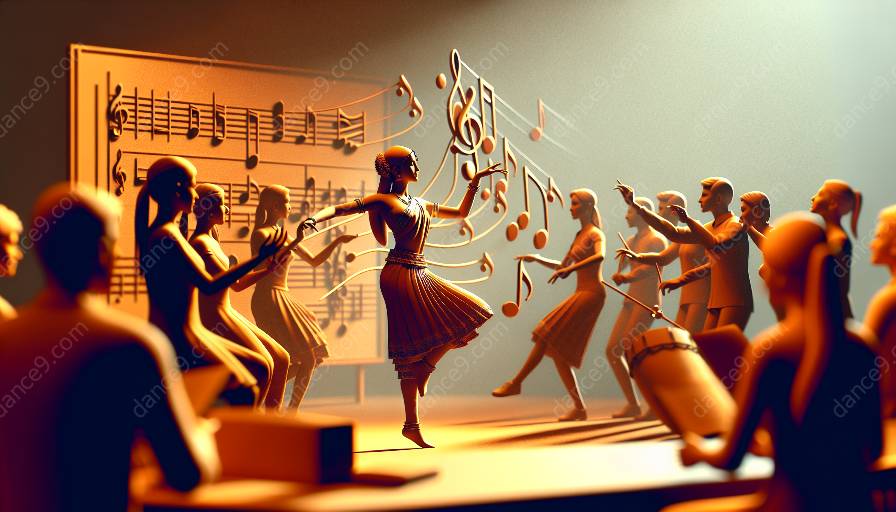Music has the incredible ability to inspire dance movements in numerous unique ways, showcasing the intricate and inseparable relationship between dance and music. Understanding the multidimensional influence of music on dance is essential in the field of dance studies, as it enriches our appreciation and comprehension of the art of movement. Let's delve into the various ways in which music serves as a catalyst for inspiring dance movements.
The Rhythm and Beat
One of the fundamental elements through which music inspires dance movements is its rhythm and beat. The pulsating rhythm of music often becomes the heartbeat of dance, dictating the tempo, timing, and fluidity of movements. The interplay between the rhythm and dance creates a symbiotic relationship, with dancers expressing the melody and rhythm through their physical interpretations. Whether it's the syncopated beat of jazz music igniting dynamic footwork or the steady rhythm of classical music evoking graceful ballet movements, the connection between music's rhythm and dance is undeniable.
Emotional Captivation
Music has the power to evoke a wide range of emotions, and this emotional captivation serves as a profound source of inspiration for dance movements. The melodic tones, harmonies, and lyrical content of music can stir feelings of joy, sorrow, excitement, or nostalgia, which in turn influence the expressiveness of dance. Dancers often choreograph and perform movements that reflect the emotional nuances conveyed through the music, effectively translating the auditory emotions into visually compelling dance sequences.
Genre Euphoria
Different genres of music elicit distinct moods and energies, and dancers draw inspiration from these genres to create diverse and dynamic movements. The infectious energy of upbeat pop music may trigger vibrant and high-energy dance routines, while the sultry melodies of R&B can inspire sensuous and fluid movements. Furthermore, the rhythmic complexities of world music genres spark imaginative and culturally rich dance expressions, expanding the landscape of dance through the joyful amalgamation of various musical styles.
Artistic Interpretation
Music often serves as a muse for dancers to creatively interpret and express their artistry through movement. The abstract and conceptual aspects of music, such as its thematic narratives or instrumental nuances, provide fertile ground for dancers to embrace artistic interpretation. Choreographers and dancers leverage the depth and layers of music to craft innovative, thought-provoking, and visually captivating dance pieces that reflect the artistic essence of the music while offering original perspectives through movement.
Collaborative Synchrony
The relationship between music and dance flourishes in collaborative synchrony, where dancers and musicians work in harmony to co-create immersive performance experiences. This collaborative interplay allows for organic and seamless integration of live music and dance, enriching the overall artistic expression. The dynamic interactions between musicians and dancers amplify the inspirational potential of music, fostering a creative synergy that elevates the emotional resonance and aesthetic allure of the combined artistic forms.
Conclusion
Music serves as an inexhaustible wellspring of inspiration for dance movements, offering a myriad of pathways for dancers to translate musical melodies, rhythms, emotions, genres, and artistic interpretations into captivating kinetic expressions. The entwined relationship between music and dance continues to shape the landscape of dance studies, illuminating the profound connections and boundless creative possibilities that arise when these two art forms converge.

















